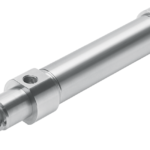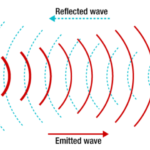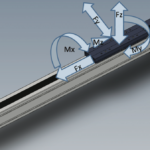Technology trends in electric actuator design continue from years past, influencing manufacturers offerings to designers. For instance, electric actuators are easier to specify and install, with more application-specific models on offer. This tracks with other trends including the move to more integrated motion designs, opening up more and varied applications for electric actuators.
Here’s what a few actuator manufacturers told us about these trends, and what else they are seeing in the industry.
Have you seen any new linear electric actuator applications recently?
Edward Neff, President, SMAC Moving Coil Actuators
We’ve seen a number of new applications. For instance, Increased replacement of air cylinders due to our new LDL and CD actuators lower price – in the range of $300. Cycle life is ten times that of air cylinders and cycled rates are twice as fast. Most of the applications are in packaging where cycle life, programmability, and cycle rate is important, as is price. This is in the US, Europe, and Asia.
We’ve also seen many electronic pick and place applications, particularly in Asia. Our linear rotary actuators are being pushed from 16-mm pitch to 8-mm and will be equipped with our HT 7.5 mm brushless motor, direct drive, with 25-mNm of torque and no gear.
Lastly, we’re seeing new applications replacing pneumatic LVDTs for part measurement where programmable soft-land on a surface then press with programmable force results in better measurement accuracy and faster operation. In these cases, the cost of the actuator is the same as the pneumatic solution.
Are you seeing an increase in demand for miniaturization or integration of feedback devices in linear components?
Edward Neff, President, SMAC Moving Coil Actuators:
Our actuators have always had real-time feedback of time, position, and result of applying a force/torque. Capping and auto-thread check with feedback telling thread presence, number of turns, and linear distance travelled is now the norm. We’re also seeing new applications for smart screw driving as well as smart drill and tap – again, the feedback on quality is required. These all require extreme force control, so yes, real-time work feedback is definitely a trend.
Saurabh Khetan, Product Line Manager – Lead Screws, Thomson Industries, Inc.
Yes – there appears to be a general theme amongst OEMs to shift toward the usage of smaller components where available. Utilizing smaller components for new programs or new generations of existing platforms allows for more installation flexibility, and the additional cost for doing so is not as high as it was in the recent past. This shift has translated to an increase in demand for miniature components, but the increase is not evenly spread across all customers, industries or applications.

What about any recent design trends in linear guides, slides, and ways?
Lindsey Brimage, Product Line Specialist – Linear Bearings and Guides, Thomson Industries, Inc.
Machines are becoming more precise and efficient, all while taking up smaller footprint than those we saw 3 to 5 years ago. This trend is especially prevalent in the medical device industry where decreasing the size of the equipment allows for more testing capacity per square foot or linear foot in the lab. This shift is causing designers to look more at compact linear guides, which are ideal for small design envelope requirements.
We’ve also noticed an increase in automation integrated into material handling. Previously, robots were stationary and limited to a static working envelope. Recently, we’ve seen designers incorporate linear motion to allow robots to move up and down an automated line or work between two automated cells.
So, has your company seen increased activity or demand from customers in any specific industries or application areas?
Edward Neff, President, SMAC Moving Coil Actuators
Electronic assembly machine builders are now buying our commercial actuators instead of buying a bunch of parts and making their own. With the drop in price packaging and food processing machine builders are now buying our electric actuators instead of pneumatic. The reasons are programmability, longer cycle life with no slamming and no seals to wear out, and twice the cycle rate. We’ve also seen an uptick in robotic end effector business, for linear, linear rotary, and 2-axis grippers. We’ve also developed a prototype robot finger that acts like a human finger and hope to turn this into a complete hand this year.

Do you have any selector, sizing, or sales software you use or offer to customers? Or any value-add services or in-house engineering support that you provide to OEMs or customers? How are these tools changing how design engineering is done?
Edward Neff, President, SMAC Moving Coil Actuators
We develop application specific GUIs for customers and due to the lowered price of our new units, we’re simplifying these for customers used to using pneumatics. We also offer MCA inside actuators custom sized for customer requirements. Our printed coil technology and laser cut part machines allow us to develop these actuators with a tool-up cost of under $1,000.
Kyle Thompson, Product Innovation Manager, Thomson Industries, Inc.
We know design engineers are busier than ever with trends toward shorter design cycles, smaller teams and more complex design projects. They need to design a part, get a quote and move on. That’s where the new Thomson 3D Instant Quote tool comes in.
In the past, if an engineer wanted to customize a shaft, roller or pin, they would need to design in 3D CAD, create a corresponding 2D drawing, and then send that off to a vendor to wait for a quote. With the Thomson 3D Quote Tool for 60 Case shafting, engineers can take their 3D model and upload it directly to the tool to get an instant quote. Shafts can be designed for optimum integration into the overall machine – custom holes, journals, flats, etc. Engineers can select from different materials to fit the application like carbon steel, chrome-plating and stainless steel. Instant pricing, delivery and shipping costs are available in the tool. And if it’s a project that requires a quick turnaround, there’s even the ability to request expedited delivery.
Any programs in training or e-learning that you use or have developed for internal use or that aid customers in the design process?
Thaniel Smith, Manager – Application Engineering, Thomson Industries, Inc.
In response to recent social distancing requirements, Thomson added a self-paced e-learning section to its website. The section is grouped by product family, and partners can freely explore particular products they’re interested in or all of them without the need for a login. The information for each product can include history, details, installation instructions, maintenance information, and design and theory. The training web pages utilize a combination of text, animations, pictures and videos to convey the information. We’ve found this content to be a perfect way for partners to absorb much of the same material they would have through our onsite trainings.






Leave a Reply
You must be logged in to post a comment.